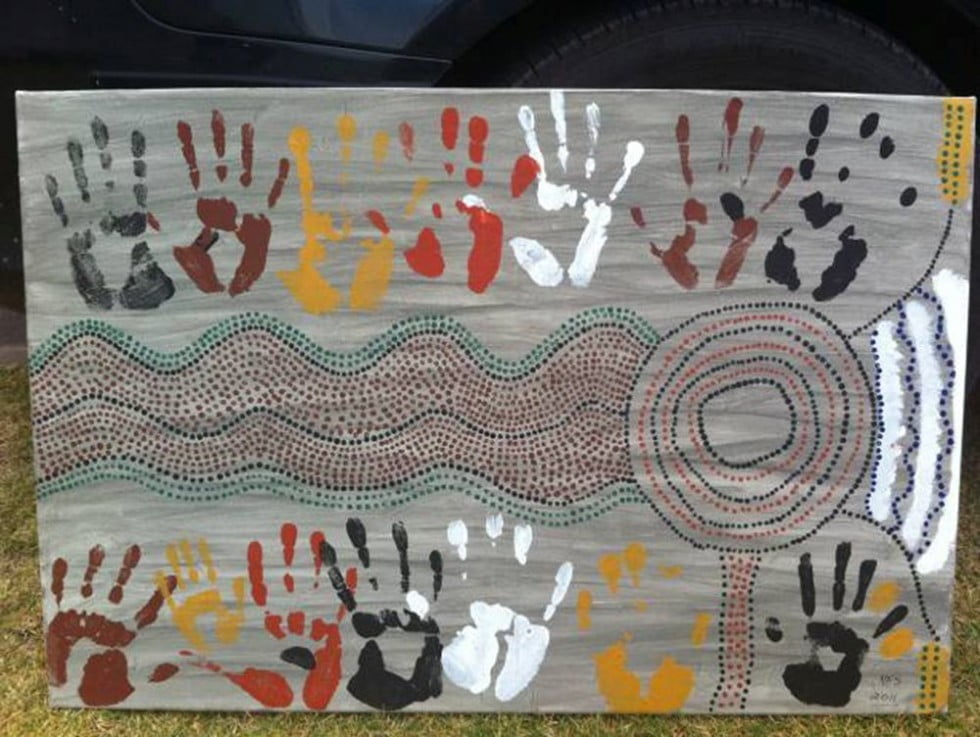As traditional custodians of country, and with a strong commitment to cultural flows, Indigenous communities were a key partner in many NFS projects. Engagement took many forms, with a strong focus on context and localism. The aim was empowerment and partnerships, rather than a one way path of informing, although this was often difficult in areas where dispossession and diasporas meant local Indigenous people were difficult to identify. Local politics also challenged efforts to maintain focus and continuity.
Successful partnerships, however, were a highlight of the NFS engagement program. Through positive engagement and interaction between the NFS Co-ordinators, the CST and the Indigenous community, the NFS was able to seek advice and guidance that helped facilitate improved connections with many Indigenous communities and outcomes on projects that truly benefit the whole of community.
At the request of local indigenous communities, we filmed Elders’ stories of the rivers, and shared the resulting films back with their own communities. Indigenous people contributed to other, Basin-wide oral history projects such as Talking Fish. Cultural site assessments were included in onground works programs. Traditional owners routinely delivered Welcome to Country ceremonies at key events, meetings and forums. Native Fish Awareness Week events included meetings at Indigenous community centres, ochre art projects, revegetation crew activities, activities with Indigenous Landcare groups, Carp musters, and traditional canoe cutting and net weaving as part of a Traditional Ecological Knowledge sharing day.
The NFS also funded a project to record the oral history and contemporary significance of Murray cod within Aboriginal communities. This project demonstrated that different Aboriginal groups across the MDB viewed the species in distinct ways and at varying levels of significance.
Genuine effort to work together with local Aboriginal people was particularly important in projects such the Brewarrina fishway, as part of the Brewarrina to Bourke Demonstration Reach. This fishway was completed after a decade of extensive consultation with the Ngemba traditional owners and was designed to blend with the heritage-listed Aboriginal stone fish traps downstream of the weir. As part of the Dewfish Demonstration Reach, a Talking Circle was installed on the banks of Myall Creek. The NFS placed an emphasis on identifying further opportunities for Aboriginal participation in Demonstration Reaches, with the CST Indigenous representative meeting with representatives across all jurisdictions to progress this issue.
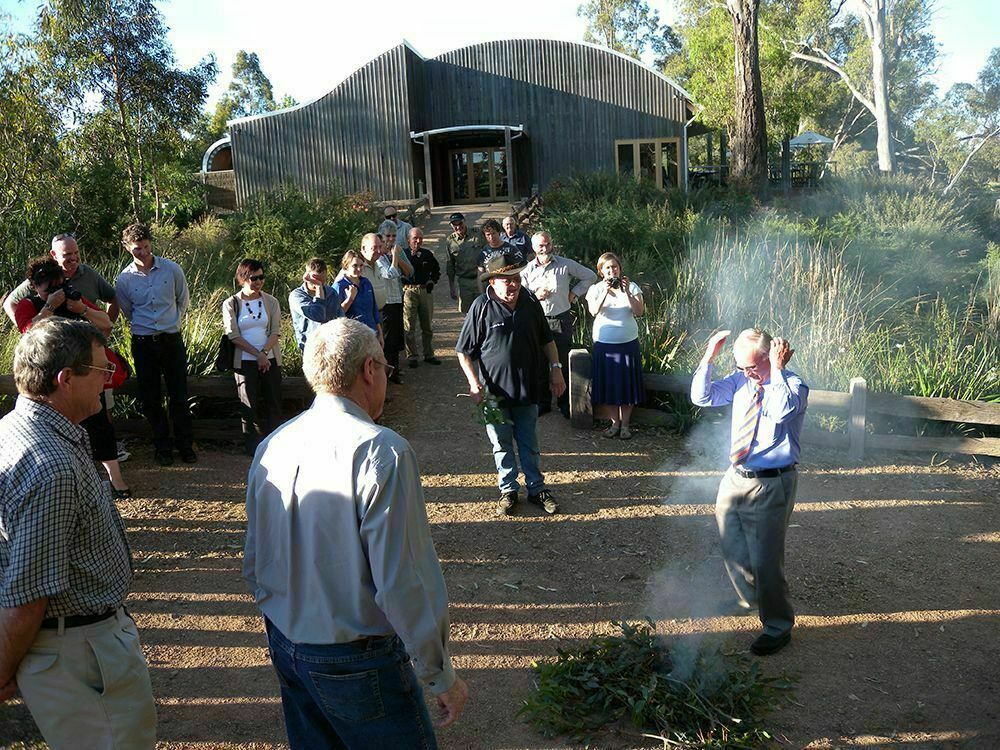
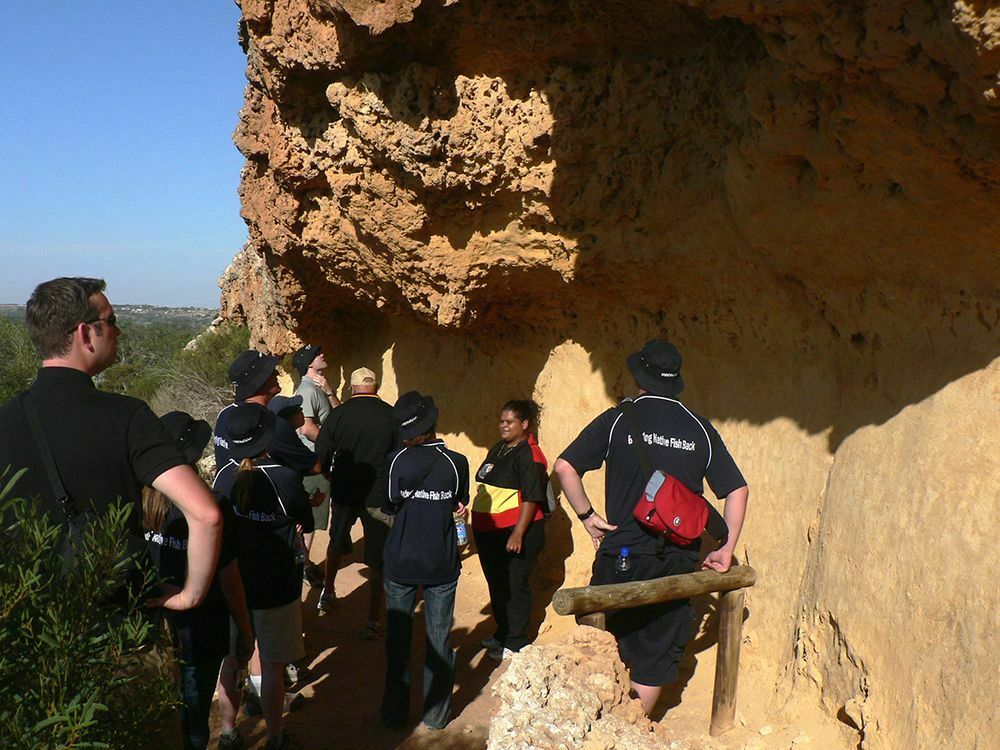
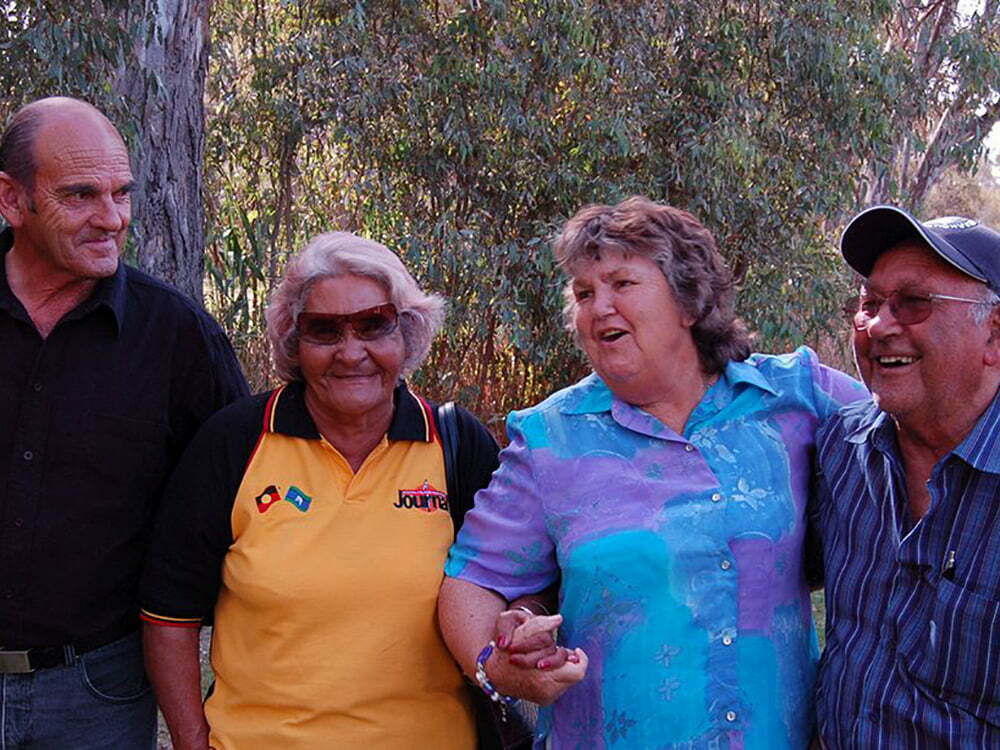
The CST Indigenous representative also focussed on increasing engagement and participation of Aboriginal communities with other NFS activities. Phil Duncan gave NFS presentations at many Aboriginal Nation gatherings, NSW Local Government Aboriginal Network and Aboriginal school groups. He participated in recreational fishing clinics, Carp musters, worked with Aboriginal Elders and youth to promote responsible fishing during NAIDOC week, and assisted NSW DPI in developing an Aboriginal Fishing Strategy. Phil was also involved in Aboriginal community capacity building and training for wetlands in Gwydir and Macquarie areas.
The 2009 NFS review recommended that there should be a gender balance from the Indigenous community on the CST to provide both male and female perspectives. Options to address this issue were also being investigated.
The NFS declared its commitment to respect for Indigenous culture by including a large Aboriginal painting of native fish and the MDB rivers across the back of the NFS team shirts. There were also intentions to produce a brochure on native fish and Aboriginal people in the MDB.
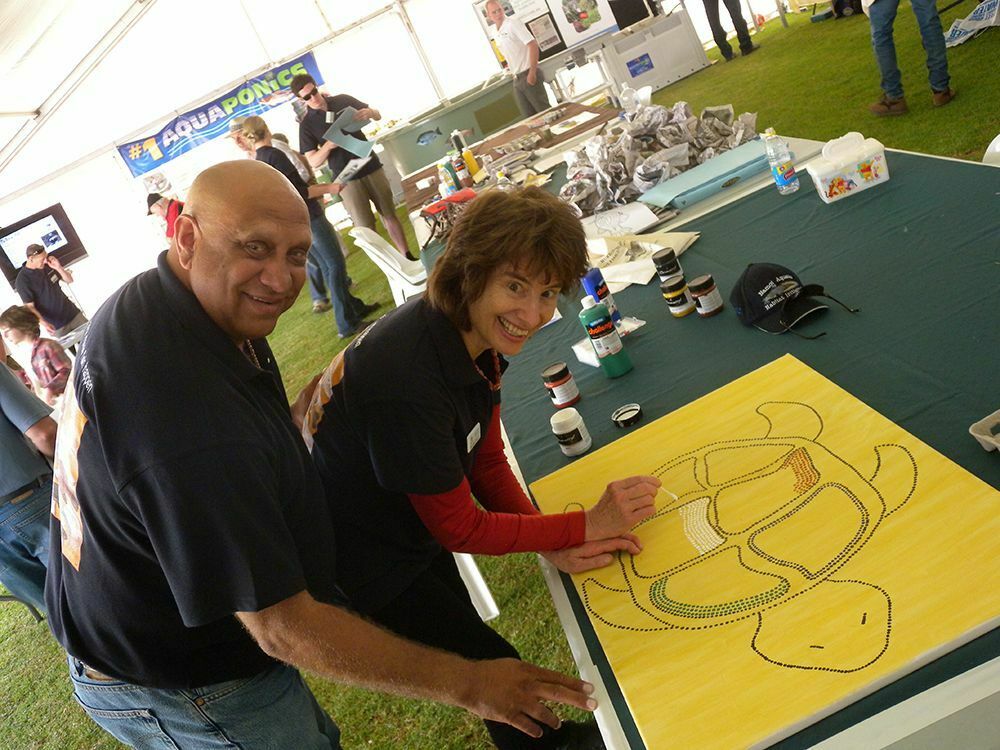


Case Study: Talking Circle on the banks of the Myall Creek within the Dewfish Demonstration Reach
A Talking Circle was installed on the banks of Myall Creek, as part of the Condamine Alliance River Rescue project which is improving the health of the Dewfish Demonstration Reach. It recognises that traditional and local Aboriginal knowledge represent an important part of river management.
This modern interpretation of a Talking Circle consists of concrete seats hand carved by renowned Aboriginal artist Laurie Nilsen who worked with the local Aboriginal community and school children when developing the carvings.
The Talking Circle provides a place to rest, reflect and tell stories about dewfish, this river reach and local Aboriginal culture. As an important symbol in Aboriginal culture, it represents equality, interconnectedness and continuity. People within the circle can all contribute to a discussion, share views and ideas and listen to each other.
There was strong support within the local community and the Western Downs Regional Council for the creation of this Talking Circle. It was launched in 2011, and sits within a riverside parkland. Initially the Talking circle was misunderstood by the some in Dalby. Through clear and widespread explanation of its significance to the Indigenous and wider community, the Talking Circle has been understood and well respected by the whole Dalby community. This is evident by the lack of graffiti on the Talking Circle since its opening.
Case Study: Indigenous participation in the Namoi Demonstration Reach
Cultural awareness and understanding was an important component of successfully implementing the Namoi Demonstration Reach in north-west NSW, recognising the strong connection the Gamilaraay Aboriginal people have with the local environment. A range of engagement activities involving local Aboriginal communities focussed on cultural survey training, implementing on ground activities and building cultural awareness amongst local stakeholders. Relationships were established with the Local Aboriginal Land Councils and the Namoi Aboriginal Advisory Committee, as well as the Namoi Catchment Management Authority, TAFE, and a local archaeologist, who all assisted in identifying and surveying sites within the Demonstration Reach.
Collaboration with these groups enabled sharing agency knowledge about the Demonstration Reach project aims, objectives and outcomes, whilst past and current Indigenous use of the reach was identified and used to guide management actions. This information was displayed on interpretive signage using Gamilaraay language and local commissioned art to raise cultural awareness along the reach. This knowledge transfer helped strengthen relationships with, and empower, the local Aboriginal community. The Local Aboriginal Land Council also trained in plant propagation and implemented a riparian and aquatic revegetation program at priority sites along the Demonstration Reach.
Case Study: Sharing traditional knowledge in Wodonga during Native Fish Awareness Week
Three new aboriginal Landcare groups exist in the Wodonga area – the Bidja Bila, Ghunda Mulla and the Junction. These groups are all building strong advocacy for local rivers and their native fish populations and are involved in riparian rehabilitation works.
During the 2010 NFA week, people gathered at the Kiewa River confluence with the Murray River to share perspectives on river values and river management, share and pass on traditional knowledge and build and strengthen relationships between the groups and government agencies.
Elders passed on skills and knowledge of traditional activities that were once part of Aboriginal life on the river. A large river red gum had already been selected and approved by Parks Victoria and Wodonga Council as a canoe tree. During the day the tree was marked and then the bark cut from tree to make a traditional canoe, which was to be exhibited in the Albury Regional Museum. This process was filmed, and local media also reported on the event. Canoe cutting had not been practiced in the area for more than 200 years.
Two local women, who are reviving the ancient art of weaving in the north east, collected reeds from nearby billabongs to make practical items such as fish and eel traps and baskets, and taught other women this process. A senior Elder also showed young people how to make fish spears using Phragmites and mulga.
